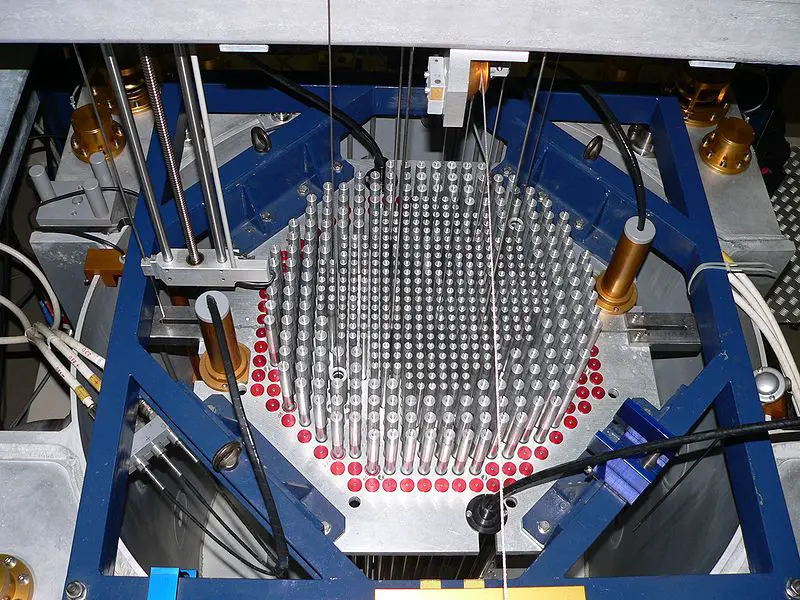
The strong nuclear force is one of the four fundamental forces of nature, along with gravity, the electromagnetic force, and the weak nuclear force.
Although it is less known than its counterparts, it plays a fundamental role in the structure and stability of matter in the universe.
The strong nuclear force is the strongest of the four fundamental forces. To put it into perspective, it is about 100 times stronger than the electromagnetic force, which in turn is much stronger than gravity.
What is the strong nuclear force?
The strong nuclear force is one of the most powerful forces in nature, but it acts on a subatomic scale, that is, in the nucleus of atoms.
Its main function is to hold protons and neutrons together in the nucleus of an atom. This force is responsible for the cohesion that keeps the atomic nuclei together despite the electrical repulsion between the positively charged protons.
The Quark: The fundamental piece
To understand the strong nuclear force, we must first introduce the concept of quarks. Quarks are subatomic particles that make up the protons and neutrons in the nucleus of an atom.
Quarks are the smallest "bricks" of matter, like the bricks used to build a house. These “bricks” combine and group together to form other larger particles, such as the protons and neutrons found in the nuclei of atoms.
The strong nuclear force is like a very powerful glue that holds quarks together inside these larger particles. Without that glue, the quarks would separate and we wouldn't be able to have protons, neutrons, and ultimately atoms. In nuclear physics, these strong bonds are called gluons.
Gluons are mediator particles that transmit the strong nuclear force between quarks.
What is the strong nuclear force for? Examples
The strong nuclear force serves to fulfill several fundamental functions in the subatomic realm and in the universe in general. Below I show some examples in which this type of force is crucial:
Holds atomic nuclei together
Its main function is to hold protons and neutrons together in the nucleus of an atom. Protons, which have a positive electrical charge, experience strong electrical repulsion due to their similar charges. The strong nuclear force overcomes this repulsion and holds the protons and neutrons together in the nucleus, preventing the nucleus from disintegrating.
Stability of atoms
Without the strong nuclear force, atomic nuclei would disintegrate, leading to the instability of atoms. This would make matter as we know it not exist.
Nuclear fusion
The strong nuclear force is essential for nuclear fusion, a process by which light nuclei combine to form heavier nuclei, releasing an enormous amount of energy in the process.
This process is the source of energy that powers the stars, including our sun. Nuclear fusion is a potential source of clean and abundant energy on Earth and is being investigated for use in energy production.
Nuclear fision
 In nuclear fission, a heavy nucleus splits into smaller nuclei, releasing a large amount of energy in the process. The strong nuclear force is what holds protons and neutrons together in the nucleus before fission and also acts during the fission process to release a large amount of energy.
In nuclear fission, a heavy nucleus splits into smaller nuclei, releasing a large amount of energy in the process. The strong nuclear force is what holds protons and neutrons together in the nucleus before fission and also acts during the fission process to release a large amount of energy.
For example, in a nuclear reactor, uranium or plutonium nuclei are bombarded with neutrons, causing these nuclei to fission.
Composition of matter
The strong nuclear force is also essential for understanding the composition of matter. Protons and neutrons, which form the nucleus of atoms, are made of quarks.
Understanding Nuclear Physics
Scientific research in nuclear and particle physics has provided a deeper understanding of the strong nuclear force and how it works under extreme conditions, such as in neutron star nuclei or in high-energy experiments.
This understanding allows us to explore the internal structure of matter and nuclear phenomena in the universe.
History of the strong nuclear force
The understanding of the strong nuclear force has evolved over time. During the 20th century, physicists theorized about the existence of a force that held atomic nuclei together.
However, it was not until the 1930s that Japanese physicist Hideki Yukawa proposed the existence of a new type of mediator particle that carried this force. This particle, called the pi (π) meson, was the first theoretical evidence of the strong nuclear force.
Over time, subsequent experiments and theories revealed more details about how this force works and how it is related to quarks and gluons. The development of quantum chromodynamics (QCD) as a quantum theory of the strong nuclear force in the 1970s was a crucial step in our understanding of this force.